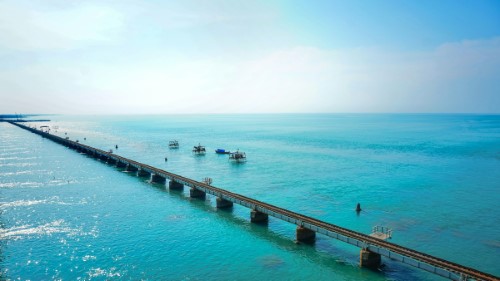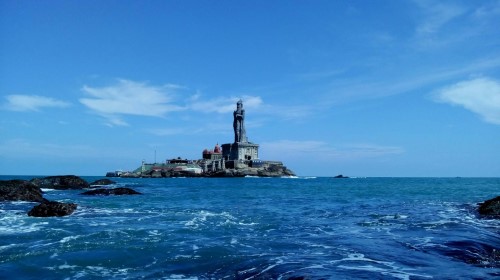5 Days South India Tour (Tirupati, Pondicherry, Chennai)
Chennai > Tirupati 1N > Pondicherry 2N > Chennai 1N > Chennai
Duration
5 Days
Tour Type
Leisure & Sightseeing
Group Size
20 persons
Location
Tamil Nadu
Sketch Itinerary
Day 1
Arrival in Chennai – Drive to Tirupati (135 km / 3-4 hrs)
Day 1
Arrival in Chennai – Drive to Tirupati (135 km / 3-4 hrs)
Overnight at the Hotel in Tirupati
Day 2
Tirupati – Pondicherry (250 km / 5-6 hrs)
Day 2
Tirupati – Pondicherry (250 km / 5-6 hrs)
Overnight at the Hotel in Pondicherry
Day 3
Pondicherry Exploration
Day 3
Pondicherry Exploration
Overnight at the Hotel in Pondicherry
Day 4
Pondicherry – Chennai (160 km / 3.5-4 hrs)
Day 4
Pondicherry – Chennai (160 km / 3.5-4 hrs)
Overnight at the Hotel in Chennai
Day 5
Departure from Chennai
Day 5
Departure from Chennai
Transfer to Chennai Airport as per flight schedule
Itinerary
Day 1: Arrival in Chennai – Drive to Tirupati (135 km / 3-4 hrs)
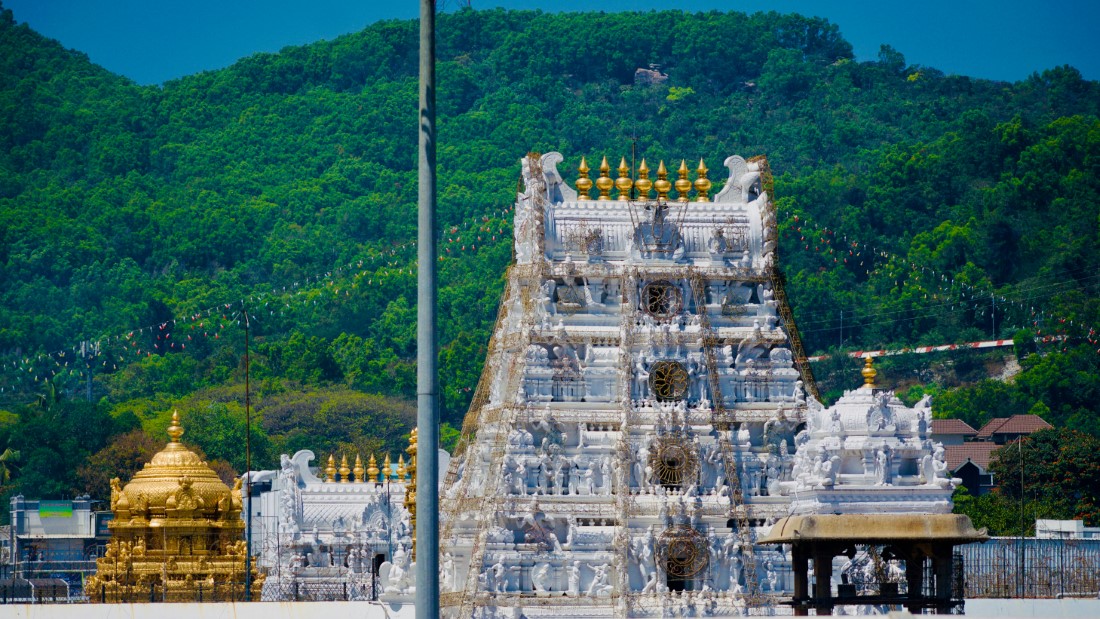
Your tour begins as you land at Chennai Airport. From there, embark on a scenic drive directly to the sacred town of Tirupati. Upon arrival, check into your hotel and prepare for a spiritual evening. The highlight of the day is a visit to the revered Sri Venkateswara Swamy Temple on Tirumala Hill. Be captivated by the divine atmosphere of this ancient shrine, one of the most visited pilgrimage centers in the world, as you witness its powerful rituals and soak in the spiritual energy of the surroundings
Overnight Stay in Tirupati
Day 2: Tirupati – Pondicherry (250 km / 5-6 hrs)
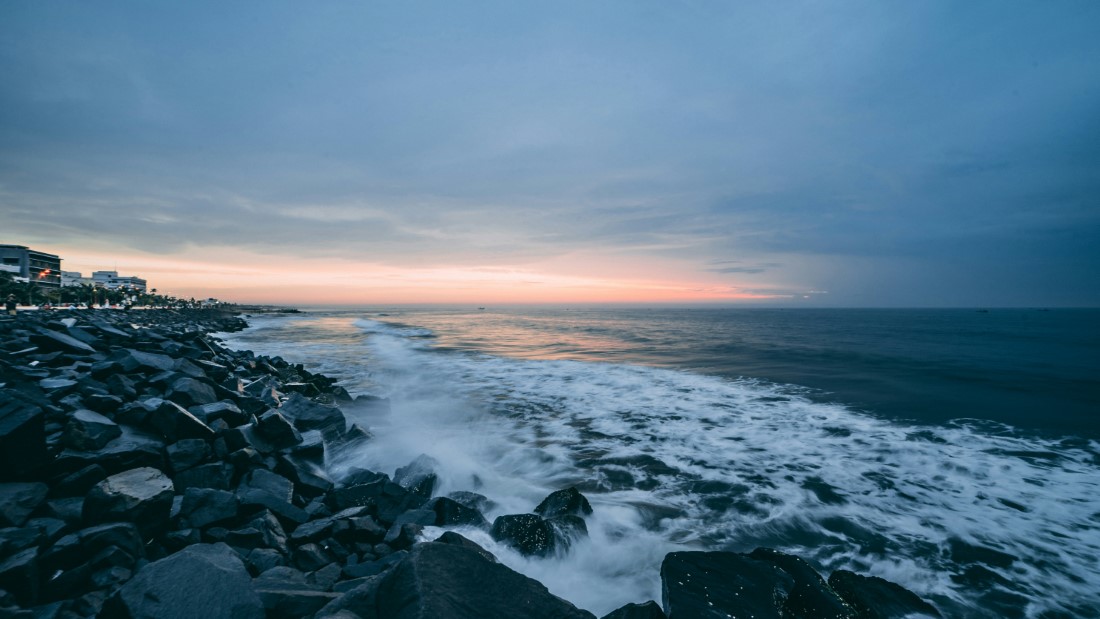
After breakfast in Tirupati, embark on a scenic drive to the tranquil Union Territory of Pondicherry. The journey offers a delightful change in scenery as you head towards the coast. Upon arrival, check into your hotel and spend the afternoon discovering the town's unique character. Visit the charming French Quarter with its beautifully preserved colonial architecture, enjoy a refreshing sea breeze with a stroll along Promenade Beach, and conclude with a peaceful visit to the Sri Aurobindo Ashram, a haven for spiritual seekers
Overnight Stay in Pondicherry
Day 3: Pondicherry Exploration

Today is dedicated to exploring the unique charm of Pondicherry. In the morning, visit Auroville, a futuristic township known for its universal harmony and spiritual experimentation, where you can see the iconic Matrimandir (viewed from outside). The afternoon is free to delve deeper into Pondicherry's bohemian vibe – spend time at Paradise Beach, enjoy some sun and sand, or wander through the vibrant local markets and quirky French cafes that add to the town’s artistic atmosphere
Overnight Stay in Pondicherry
Day 4: Pondicherry – Chennai (160 km / 3.5-4 hrs)
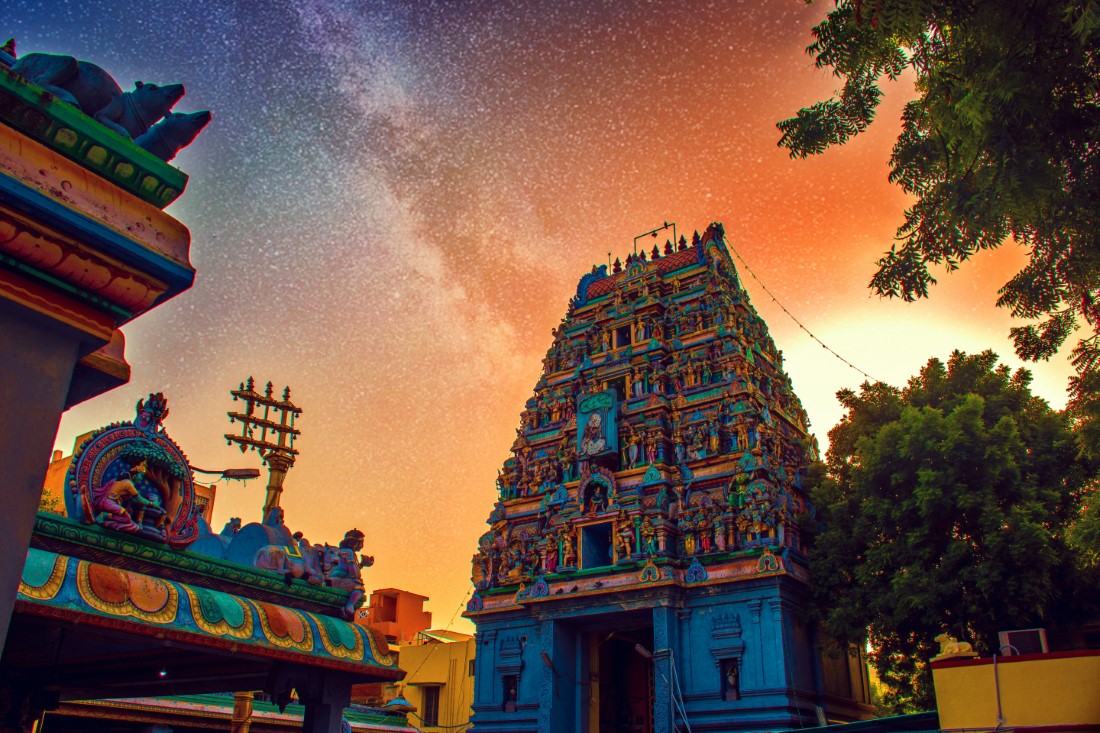
After breakfast, begin your journey back to Chennai. Upon arrival, check into your hotel and set out for an afternoon city tour. Explore Fort St. George, the oldest English fortress in India, enjoy a stroll along Marina Beach, one of the world’s longest urban beaches, and seek blessings at the Kapaleeshwarar Temple, a splendid example of Dravidian architecture
Overnight Stay in Chennai
Day 5: Departure from Chennai
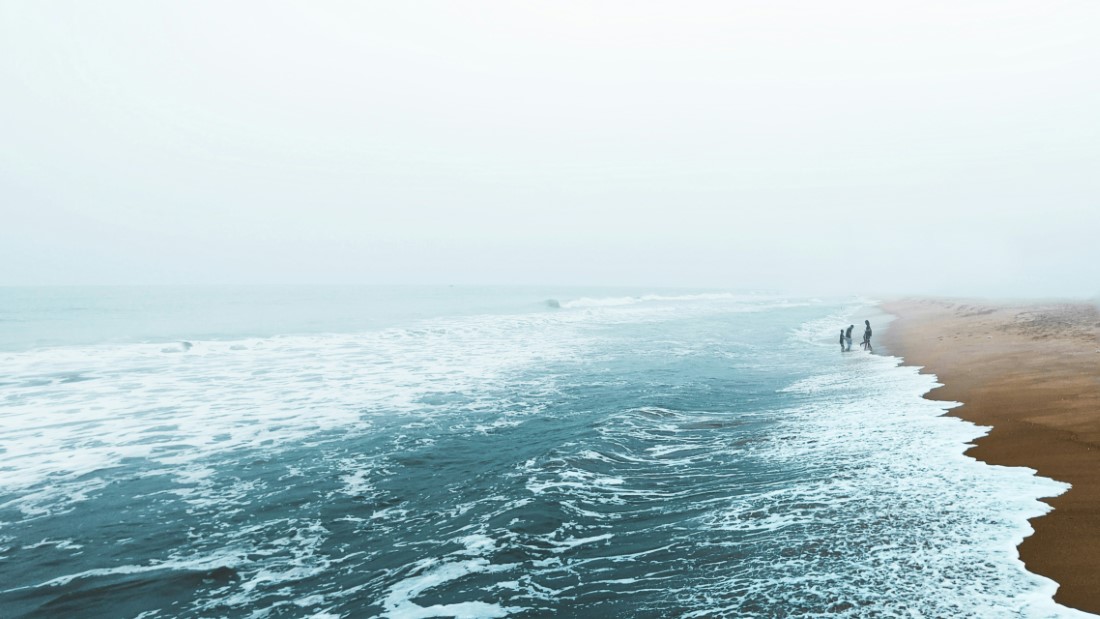
With a heart full of cherished memories from the spiritual grandeur of Tirupati, the serene charm of Pondicherry, and the bustling city of Chennai, your tour concludes. After breakfast, you will be transferred to Chennai Airport for your departure, leaving with a promise to return to the captivating landscapes of Southern India
End of Tour
Included/Excluded
Accommodations: Enjoy a comfortable stay with breakfast at carefully selected hotels, based on a twin-sharing basis. In hill stations, non-A/C rooms will be provided for your comfort
Seamless Transportation: All transfers and sightseeing are covered by a dedicated air-conditioned vehicle as per your itinerary. A professional and experienced driver will be with you from 8 AM to 8 PM daily to ensure a smooth journey
All-Inclusive Fees: We've taken care of all the details. This package includes all taxes, tolls, interstate permits, parking fees, and driver allowances
To & Fro Travel: Airfare or train tickets to your starting point and from your end point are not included
Meals: Lunches, dinners, and snacks are not specified in the itinerary and are not included in this package
Personal Expenses: Any personal expenses such as tips, laundry, telephone calls, and portage are your responsibility
Optional Activities: Any activities marked with an asterisk (*) are not included in the package price
Entrance Fees: All entry fees to sightseeing spots and monuments are to be paid directly
Travel Insurance: We recommend arranging separate travel insurance for your trip
Experiences
FAQs
What is the best time to visit Tamil Nadu?
The ideal time to visit is October to March, when the weather is cooler and more suitable for sightseeing. Summer (April–June) is hot and humid, especially in coastal regions. Hill stations like Ooty and Kodaikanal can be visited even during the summer.
How can I reach Tamil Nadu?
By Air: Major airports include Chennai, Coimbatore, Madurai, Trichy, and Tuticorin.;
By Train: Well connected via Southern Railway to all major cities in India.
By Road: NH network connects Tamil Nadu with Karnataka, Kerala, Andhra Pradesh, and Telangana.
Which languages are spoken in Tamil Nadu?
The official language is Tamil. English is widely understood in urban areas and tourist sites. Hindi is less commonly spoken but may be understood in commercial zones.
Are there any cultural norms to keep in mind?
Yes. Respect for local customs is important. Dress modestly, especially when visiting temples. Footwear must be removed before entering religious places.Some temples may not allow Western attire. Sarees or long skirts for women, and dhotis or pants for men are preferred in stricter temples. Photography may be restricted inside temples.
Do I need any permits to visit places in Tamil Nadu?
No permits are required for most places in Tamil Nadu. However, foreign nationals visiting protected tribal areas like Kalakad Mundanthurai Tiger Reserve may need special permits.
What kind of accommodation is available?
Tamil Nadu offers a range from budget guesthouses to luxury hotels, heritage properties, eco-lodges, and homestays. Temple towns often have dharamshalas and modest lodges, while cities like Chennai and Madurai offer 5-star options.
Is Tamil Nadu a vegetarian-friendly state?
Yes. Tamil Nadu has a strong tradition of vegetarian cuisine, especially in temple towns. Idli, dosa, vada, pongal, and sambhar are staples. Non-vegetarian options are also widely available in coastal and southern districts.
What are popular modes of transport within Tamil Nadu?
Intra-city: Auto-rickshaws, taxis, buses, Ola/Uber (in larger cities);
Inter-city: Government buses (TNSTC), private buses, and trains;
Rental cars and bikes are also available in tourist areas like Ooty, Kodaikanal, and Pondicherry;
Are wildlife safaris available?
Yes, but limited. Mudumalai, Sathyamangalam, and Anamalai Tiger Reserve offer forest safaris, though wildlife sightings depend on the season and time of day. Bookings must be made via forest departments or authorized eco-tourism sites.
What are some top destinations in Tamil Nadu?
Chennai (city life, beaches);
Madurai (Meenakshi Temple);
Rameswaram (pilgrimage);
Kanyakumari (southern tip of India);
Thanjavur (heritage, temples);
Ooty & Kodaikanal (hill stations);
Mahabalipuram (shore temples);
Chidambaram, Trichy, Kumbakonam (temple circuits).
What should I buy in Tamil Nadu?
Kanchipuram silk sarees;
Tanjore paintings;
Bronze idols;
Temple jewelry;
Spices, filter coffee, and handicrafts;
Poompuhar and Khadi products.
Are there any famous festivals or events?
Pongal (January);
Navaratri (Sept–Oct);
Natyanjali Dance Festival – Chidambaram;
Chithirai Festival – Madurai;
Float Festival – Trichy
Festivals are deeply rooted in culture and include traditional music, dance, and rituals.
Why visit Ooty?
Ooty is a charming hill station in Tamil Nadu, famous for its cool weather, colonial-era charm, gardens, lakes, and tea estates. Some of the key attractions are
Botanical Gardens;
Ooty Lake (boating);
Doddabetta Peak;
Rose Garden;
Toy Train Ride (Nilgiri Mountain Railway – UNESCO Heritage);
Tea Factory Visit.
Can I do boating in Ooty?
Yes. Boating is available at Ooty Lake and Pykara Lake.
Are trekking and adventure activities available in Kodaikanal?
Yes. Popular treks include Dolphin’s Nose, Coaker’s Walk, and Pillar Rocks. Cycling and boating at Kodai Lake are also popular.
Are there any eco-stays or nature resorts in Kodaikanal?
Yes. Kodaikanal has eco-lodges, plantation stays, and forest-view resorts suited for nature enthusiasts.
What makes Kodaikanal special?
Kodaikanal is a serene hill station in Tamil Nadu known for misty hills, pine forests, waterfalls, and star-shaped lake. Some of the must-visit places are
Kodaikanal Lake (boating, cycling);
Coaker’s Walk;
Bryant Park;
Pillar Rocks;
Guna Caves;
Dolphin’s Nose;
Pine Forest;
Weather can change quickly—carry layers;
Look out for homemade chocolates and eucalyptus oil.
Is there a specific dress code for Rameswaram Temple?
Yes. Men are expected to wear dhotis and remove shirts. Women should wear sarees or salwar kameez. Western wear is discouraged. You can take a ritual bath in the 22 wells inside the temple. A guide or priest can assist with the process.
What are other attractions apart from the temple?
Dhanushkodi, Pamban Bridge, Abdul Kalam’s Memorial, and Ariyaman Beach are popular.
Are there non-vegetarian options in Rameswaram?
Rameswaram is primarily a vegetarian town, especially around the temple area. Non-veg restaurants are available at a distance.
What is the main attraction in Madurai?
The Meenakshi Amman Temple is the centerpiece. Other attractions include Thirumalai Nayakkar Palace and Gandhi Memorial Museum. During temple festivals, classical music and dance performances are held. Chithirai Festival (April–May) is the grandest.
from
₹ 23,199
Oct 25 - Mar 26
Tour Start Date
{{ start_date_html }}
Tour End Date
{{ end_date_html }}
Last Booking Date
{{ last_booking_date_html }}
{{start_date_html}}
2 Pax (Sedan)
4 Pax (Innova)
6 Pax (Innova)
8 Pax (Tempo)
10 Pax (Tempo)
Deluxe
Super Deluxe
Premium
Super Premium
Luxury
Breakfast
Breakfast & Dinner
{{type.desc}}
{{type.display_price}} per person
Extra prices:
({{type.price_type}})
{{type.price_html}}
Discounts:
{{type.from}} - {{type.to}} guests
from {{type.from}} guests
- {{ formatMoney(type.total) }}
({{type.price_type}})
{{ type.price }}%
{{ formatMoney(type.price) }}
- {{total_price_html}}
- {{pay_now_price_html}}
🎉 Applicable commission! {{total_commision_html}} ✨
from
₹ 23,199

